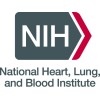
Early Diagnosis of Breast Cancer-related Lymphedema
LymphedemaThis study will conduct clinical trials to explore the mechanisms behind the development of upper limb lymphedema following breast cancer surgery. The investigators will recruit patients who have undergone breast cancer surgery and utilize Indocyanine Green (ICG) lymphography and Lymphoscintigraphy to identify the locations of lymphatic blockages. Shear Wave Elastography (SWE) will be used to detect changes in tissue limb compliance. DXA body composition analysis will measure the differences in the composition ratios between edematous and normal limbs. In addition, diffusion correlation spectrometry will be employed to monitor changes in deep tissue blood flow, complemented by continuous measurements of limb circumference and other physiological parameters. The study aims to explore the interrelationships among lymphatic circulation, limb circumference, tissue compliance, and tissue blood flow rates.

Inspiratory and Calf Muscles Training in Patients With Leg Lymphedema
Lymphedema of LegLymphedema1 moreLymphedema results in the accumulation of protein-rich fluid in the subcutaneous tissue as a result of the failure of the lymphatic system, which returns water and protein in the interstitial spaces to the bloodstream. The aim of its treatment is to return this fluid accumulated in the interstitial space to the venous system. Early diagnosis and subsequent treatment of lymphedema, which is a chronic and progressive problem, is important to improve symptoms and prevent complications. Exercises recommended by specialist physiotherapists increase lymph flow and improve protein resorption. Exercises applied with compression bandages or compression garments provide significant improvement in patients with lymphedema. The aim of this study is to provide inspiratory muscle training and leg compression therapy together with compression therapy in patients with lower extremity lymphedema. To evaluate the effectiveness of these exercises on the patient's extremity volume and fullness, tissue water content, edema status, walking capacity, functionality and quality of life by comparing the effectiveness of muscle exercise training. In addition, researchers aim to determine the more effective exercise method for these patients.

Vascular Lab Resource (VLR) Biorepository
Cardiovascular DiseasesMetabolic Disease14 moreThis is a study of biomarkers obtained from prospectively collected subject samples and their correlation with cardiovascular and metabolic diseases. The purpose of this initiative is to develop an enduring tool to allow for collaborative research between clinicians at Cleveland Clinic Main Campus and basic scientists at the Lerner Research Institute. This collaboration will allow resources to be available to clinical and basic researchers alike. This tool will enable research of vascular disease in the Vascular Lab and will leverage this valuable asset to the fullest extent to allow for interdepartmental collaboration.

Effect of Metabolic Syndrome on Complex Decongestive Physiotherapy Outcomes in Lymphedema Patients...
LymphedemaAs a result of our research, investigators could not find any study investigating the effectiveness of complex decongestive physiotherapy (KBF) in lymphedema patients with metabolic syndrome. Therefore, our aim is to compare the effectiveness of KBF in patients with and without metabolic syndrome.

Characterization of the Pathogenesis of Primary and Secondary Lymphatic Disorders
LymphangiomatosisLymphedema2 moreBackground: - Lymphatics are a type of vessel, similar to arteries and veins. Lymphatic disorders happen when these vessels don t work properly. Researchers want to look for a relationship between lymphatic disorders and variations of certain genes found in the lung, blood, and other places in the body. Objective: - To learn more about lymphatic disorders and evaluate how genetic factors affect lymphatic disorders. Eligibility: People ages 2 90 who have a lymphatic disorder or relatives of people with lymphatic disorders. Healthy volunteers 18 and older. Design: Participants may have 1 2 visits a year, or more as needed. The study is expected to last 5 years. Visits may last 1 5 days. Participants may have lab tests, medical history, and physical exam at each visit. Participants may have blood testing that includes genetics tests, and urine tests. They may have nose and throat cultures, saliva collection, and cheek swabs to collect samples. Participants may have a skin biopsy and have blood taken from an artery. Participants may have breathing tests and be studied while exercising. Participants may have an electrocardiogram. Electrodes will be placed on their chest, tracing heart rhythms. They may also have chest X-rays. Participants may have a bronchoscopy. A thin, flexible instrument will be passed through the nose or mouth, into the lung. A tissue sample will be taken. Participants who have lymphatic disease or have a relative with it may also have: CT scans. They will lie on a table and hold their breath while their chest is scanned. MRI. They will lie flat on a table that slides in and out of a scanner. ultrasound. A probe is rolled around outside the abdomen. removal of fluid around the lungs, chest, and abdomen.

Lymphatic and Systemic Immunity Changes in Post-radiation Lymphedema Development
LymphedemaThe goal of this study is to find out which immune molecules, cells, and genes are involved in the development of lymphedema (LE), so that medicines that target them can be considered for treating lymphedema. The hypothesis is that LE is a systemic, autoimmune-like disease that is initiated by inflammatory cytokines induced by surgery, radiation, and possibly chemotherapy in genetically susceptible patients.

Hypofractionated vs Standard Radiotherapy in Breast Cancer With an Indication for Regional Lymph...
Breast Cancer FemaleThe standard treatment of localized breast cancers consists of surgical removal of the tumor at the breast or removal of the entire breast and lymph nodes (sentinel lymph node and / or axillary dissection) with or without chemotherapy followed by radiotherapy on the breast or thoracic wall and the lymph node areas from 5 to 6.5 weeks. Shorter radiotherapy treatments over 3 weeks for breast cancer without lymph node involvement have been equally effective and have no more side effects in several clinical trials involving several thousand patients. This called hypofractionated radiotherapy has become a standard for breast cancers in the absence of lymph node involvement in postmenopausal women. The objective of the HypoG01 trial is to evaluate hypofractionated radiotherapy in women who require radiotherapy in the breast or chest wall and lymph node areas by comparing standard over 5 to 6.5 weeks and hypofractionated irradiation over 3 weeks analyzing the possible side effects and in particular the risk of lymphedema (swelling of the arm on the side treated) and the effectiveness of these treatments

Studying the Physical Function and Quality of Life Before and After Surgery in Patients With Stage...
Cervical AdenocarcinomaCervical Adenosquamous Carcinoma5 moreThis clinical trial studies the physical function and quality-of-life before and after surgery in patients with stage I cervical cancer. Studying quality-of-life in patients undergoing surgery for cervical cancer may help determine the intermediate-term and long-term effects of surgery.

Side Effects Screening and Early Intervention to Impact in Quality of Life of Gynaecological Cancer...
Quality of LifeGynaecological Cancer3 moreThe goal of this randomized study is to assess the impact on self-perceived quality of life (QoL) of systematic screening and early treatment of aftereffects in patients with gynaecological cancers. The main question it aims to answer is if systematic screening with validated questionaries (see in detailed description), diagnosis and early treatment of lower-limb lymphoedema, anxiety-depression, sexual dysfunction and sarcopenia-malnutrition all have a positive impact on the self-perceived QoL by gynaecological cancer patients. Participants will access the screening questionnaires and QoL questionaries on a free online app on their mobile devices. In the experimental group, in case of positive screening, patients will be referred to specialised care to early treatment of the aftereffects. Researchers will compare this group with standard usual care (opportunistic treatment) to see if systematic screening and early treatment lead to a better QoL.

Sentinel Node Detection in Endometrial Cancer: A Consolidation Study on Detection Rates of Metastatic...
Sentinel Lymph NodeEndometrial Cancer1 moreEvaluation of removal of Sentinel lymph nodes only for detection of pelvic lymph node metastases in high risk and low risk endometrial cancer.
